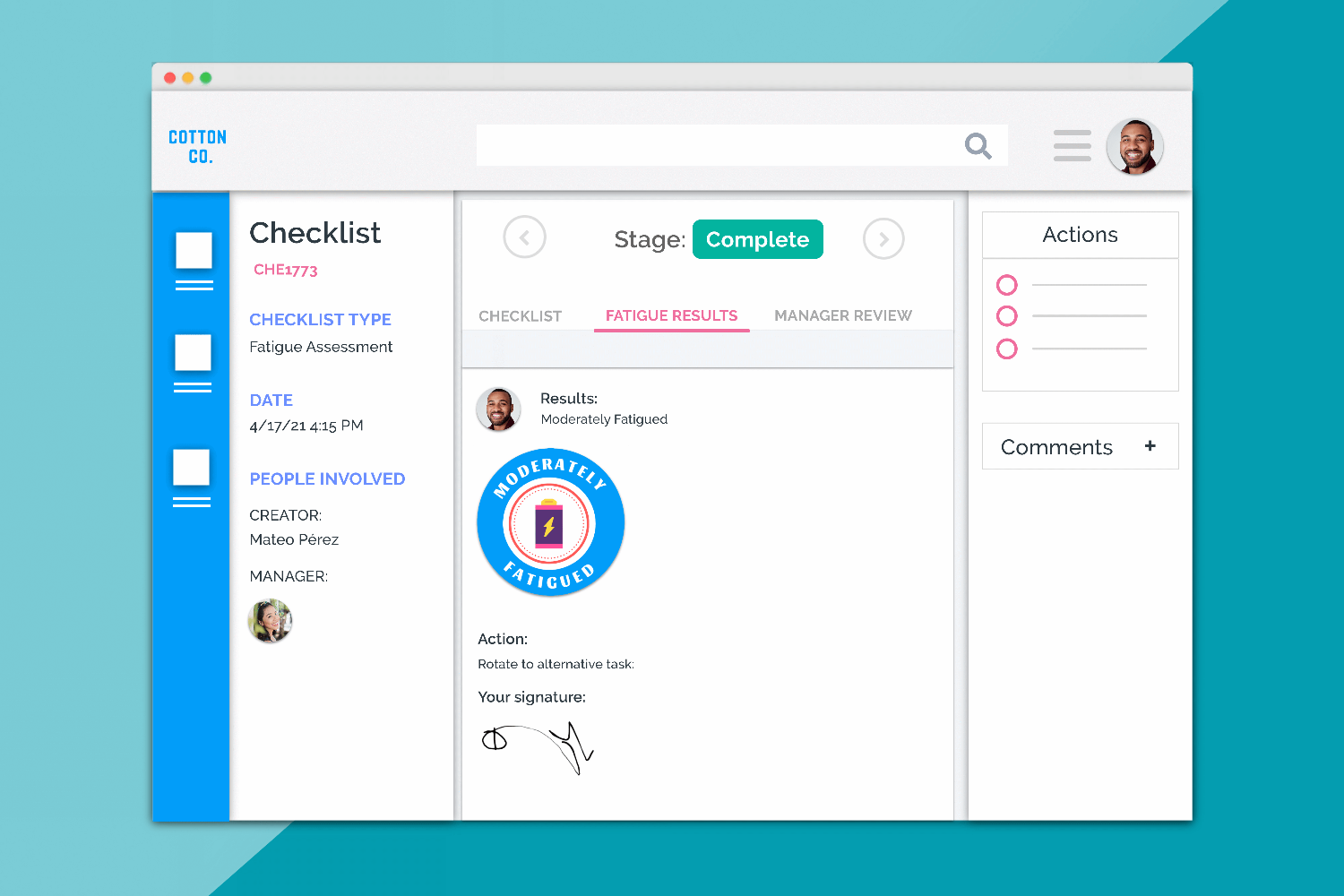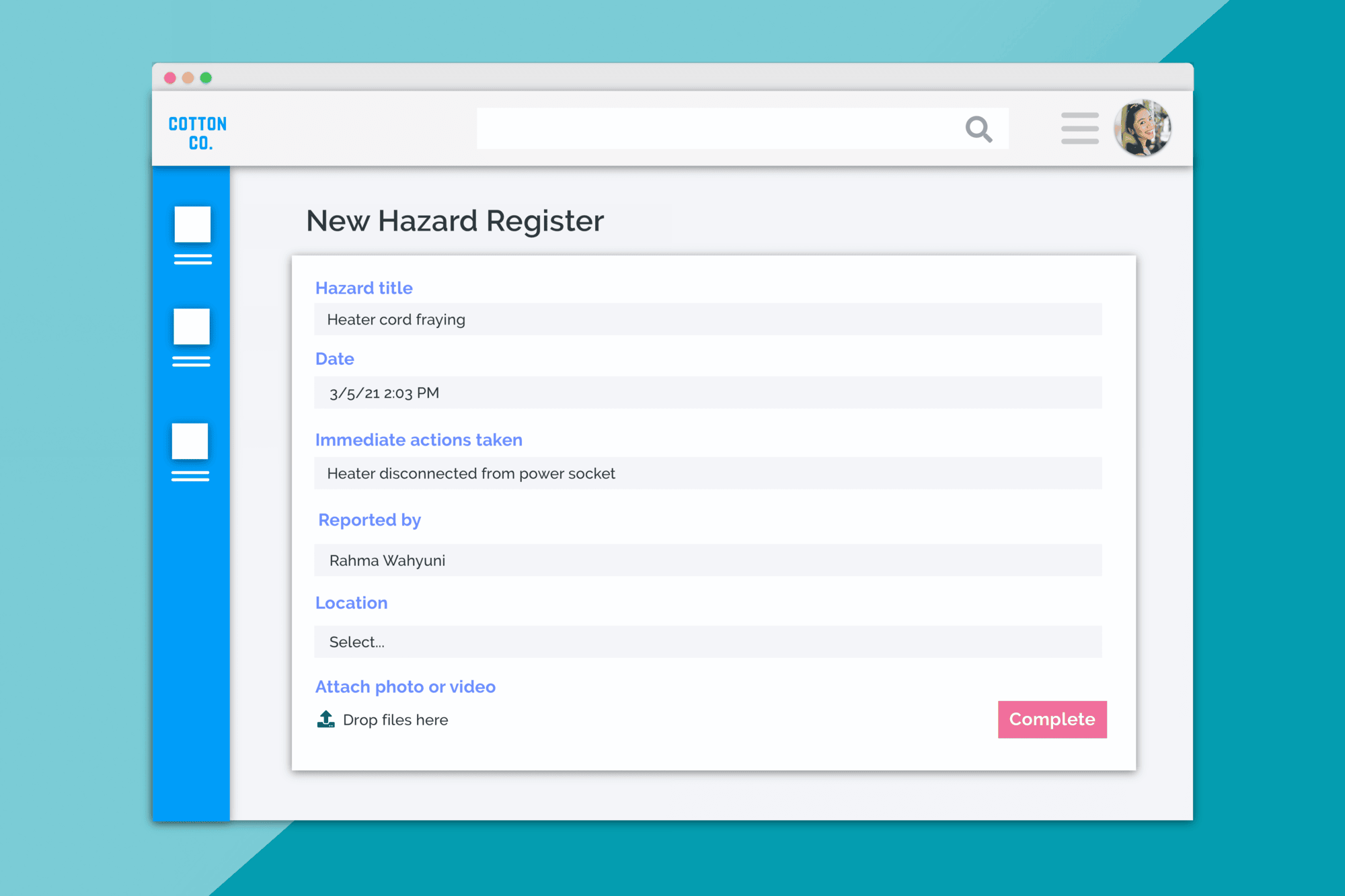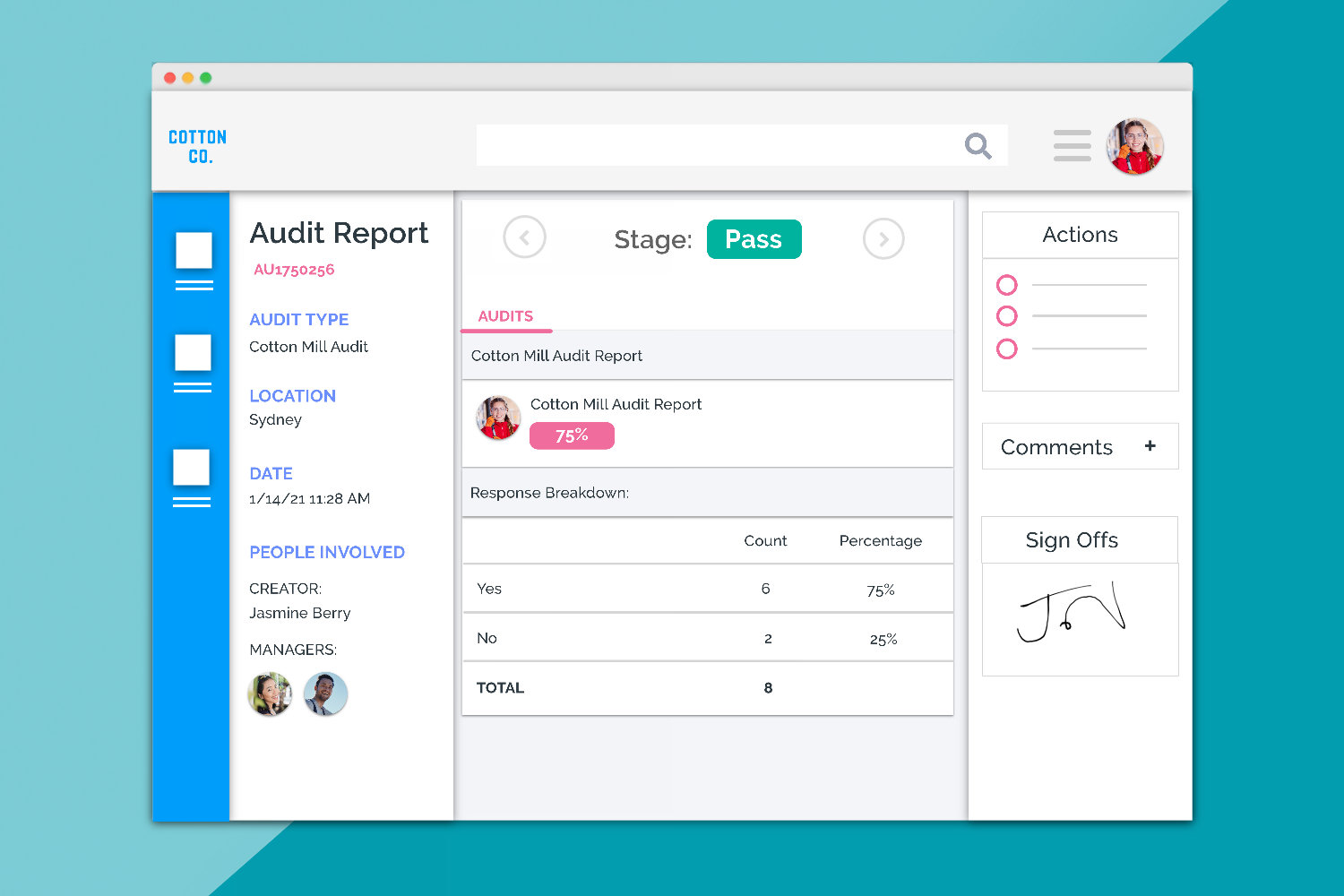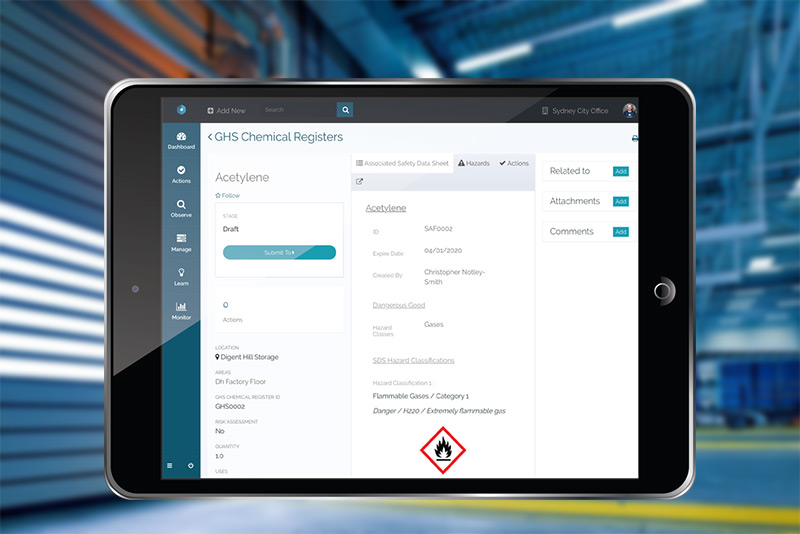
With the recent changes to the Global Harmonised System for chemical management, we decided it was time to do a big update on how Donesafe manages chemicals.
Perhaps the major distinction is that rather than setting up a new SDS every time you add a chemical, instead, you create a register of available SDSs and then apply them to chemicals as you add them. This saves major time if the chemical is used in many different locations and is a much smarter way to manage your chemicals overall.
So… introducing the GHS Chemical Register:
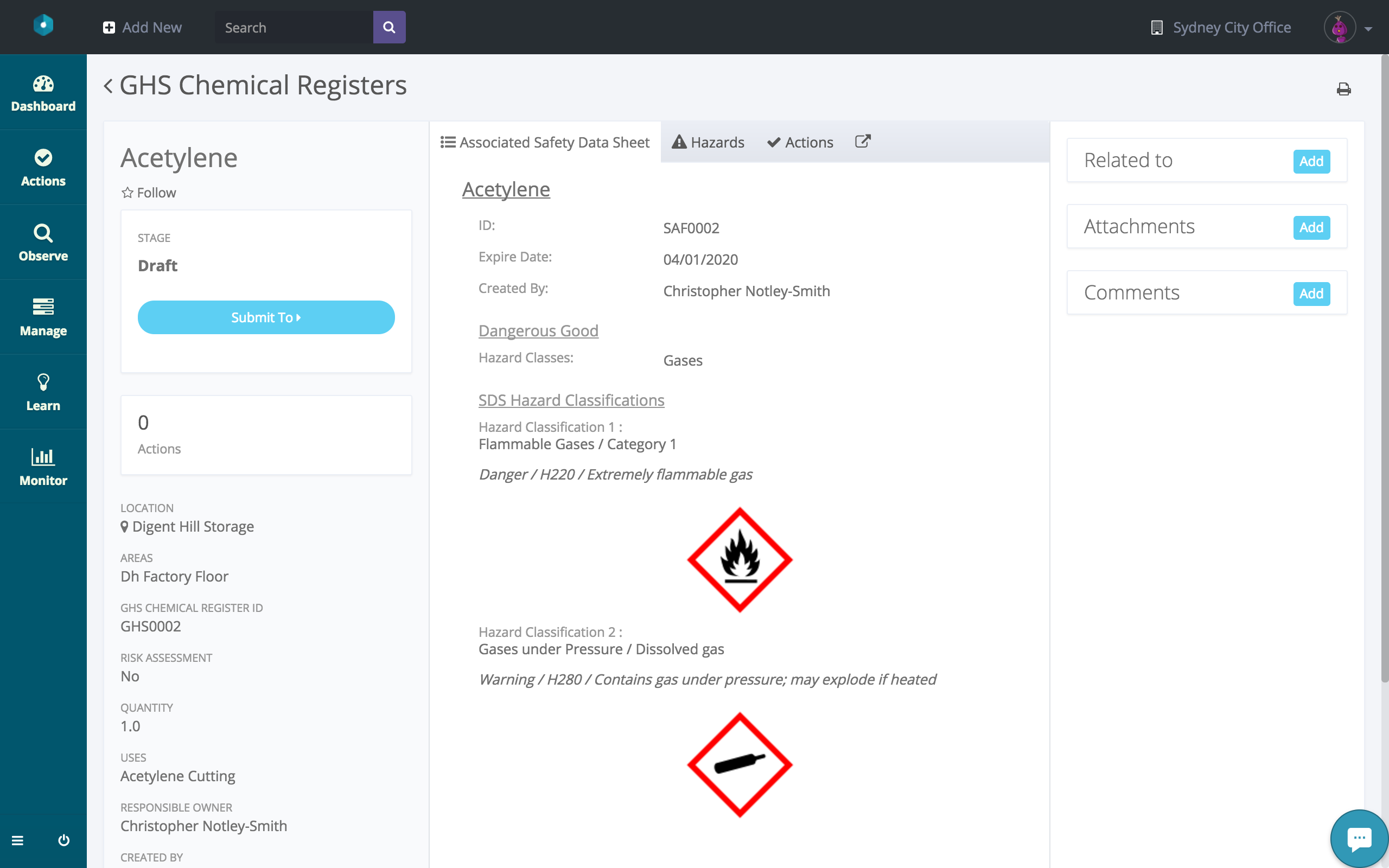
From the screenshot above you can already see there are some big improvements. Donesafe by default now stores a library in line with the Global Harmonised Standard. You can also see that a Hazards tab is also available; meaning that you can now quickly and easily create hazards and controls for each chemical in each location, right there from the record.
What’s the point of all this? Well…
- You only have to set up your SDS once for each chemical; which saves time,
- With Donesafe you can have your site-specific SDSs in your pocket and easily accessible at all times. AND,
- Once that SDS expires, you can simply update it and have it automatically updated on all chemicals to which you’ve applied it- again saving you a lot of time.
So now that we’ve wet your whistle, let’s jump in and take a look first; how to set up your Safety Data Sheets, and then how to use the new GHS Chemical Register.
If you’re not sure how to activate these registers we’ll cover that briefly at the end of this section. You can skip there now by clicking here.
Creating a Safety Data Sheet
To create your first SDS, go to [+ Add New] on the top menu and select “Safety Data Sheet Register”. This will bring up the add new page.
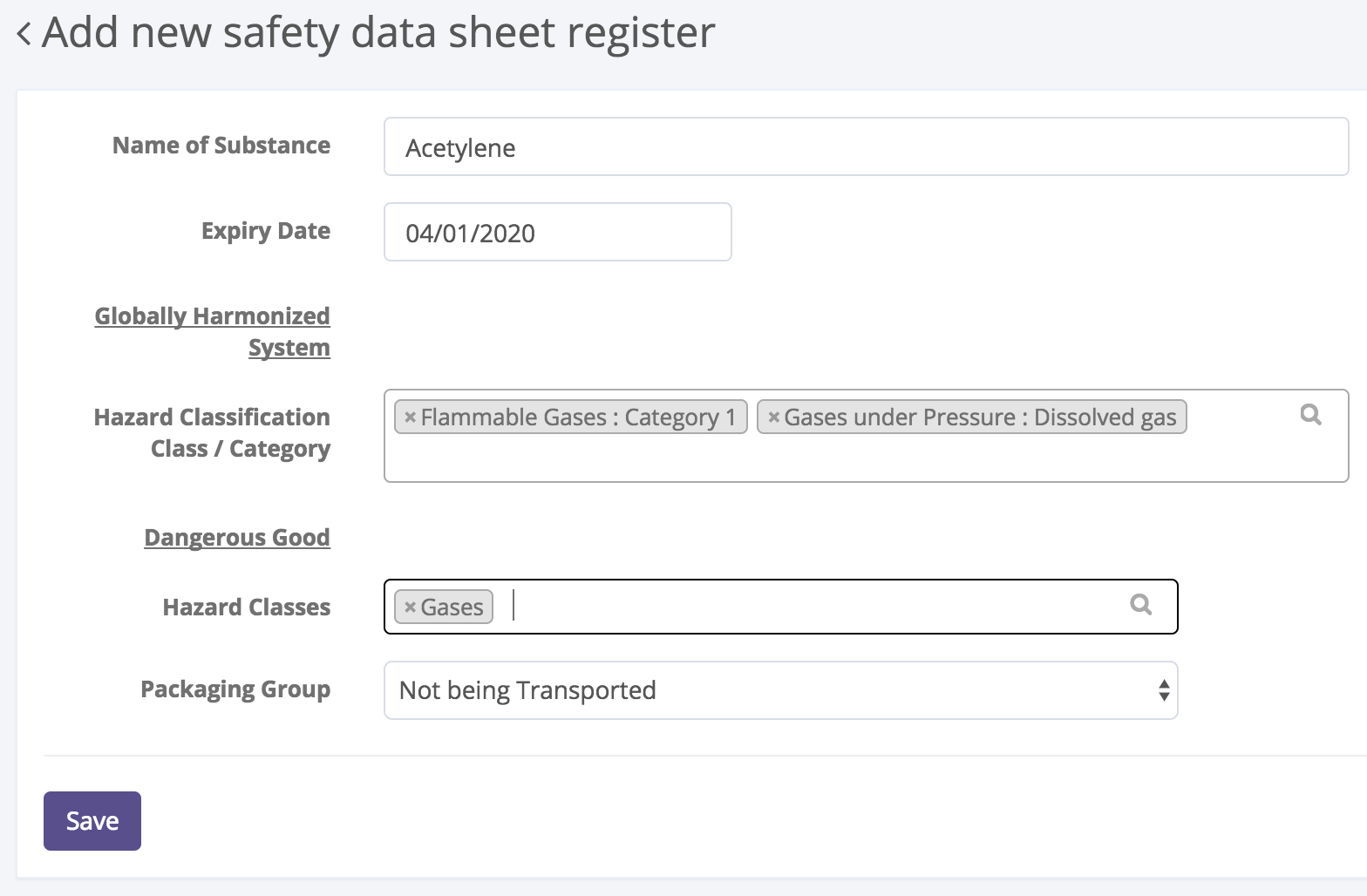
Now, if you’re not sure what settings to use, make sure to check in with your Safety Data Sheet supplier.
From here, give your Substance a name and expiry date and select with Classification Classes/Categories the substance falls into. Finally, select your Hazard Class/es and Packaging group. If you’re missing any items from your class/category, hazard classes, or packaging group, these can be configured in the settings section by going to ‘Settings’ and looking for both Chemical Register and Safety Data Sheet Register settings.

Once you’re happy, click Save.
From here you’ll find yourself on the record screen. Simply Attach the appropriate SDS and supply any details using the on-screen prompts, and you’re done!
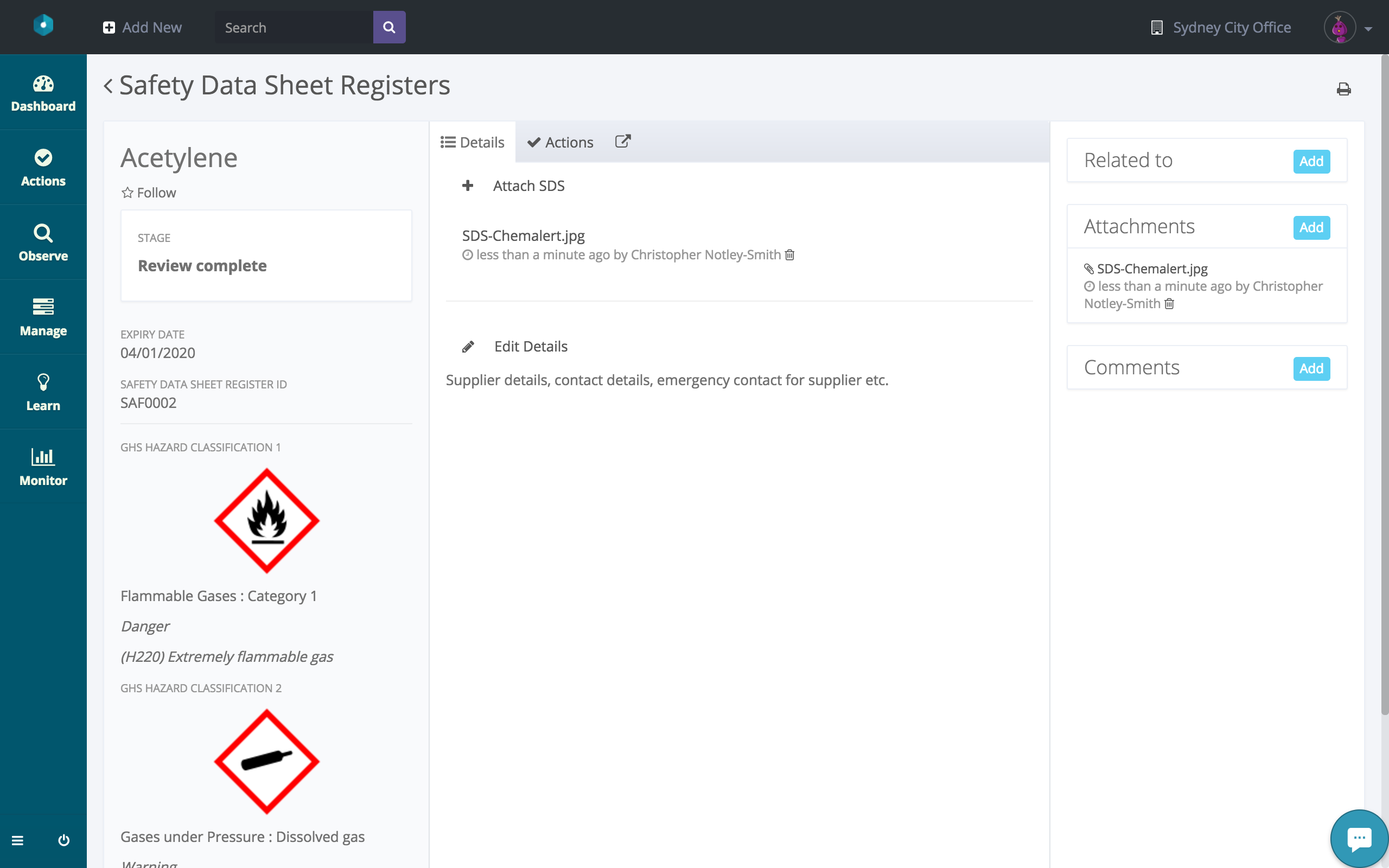
Next, we’ll take a look at how to add chemicals using the new GHS Chemical Register.
Adding Chemicals to the GHS Chemical Register
If you’ve used the old Chemical Register, then some of this will feel familiar, but we’ll run through the changes. To add a new GHS Chemical register record, go to [+ Add New] on the top menu and select “GHS Chemical Register”. This will bring up the add new page.
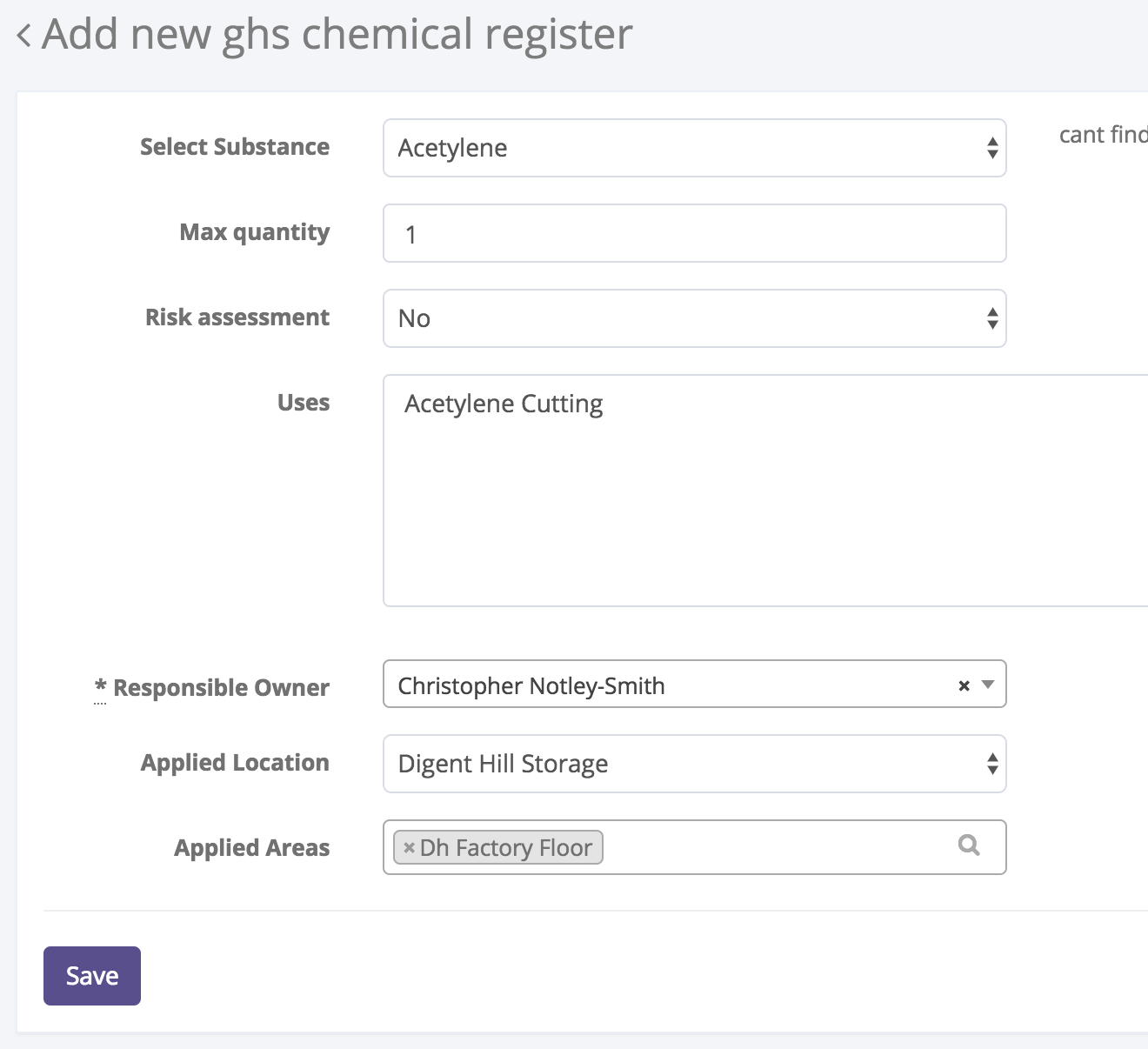
Start, by selecting from your SDS register which chemical this record is for. Select your quantity, and whether or not a Risk Assessment has been conducted. Then provide detail on what it is used for, who the responsible owner is, and of course, the location and area/s in which this chemical is located.
Here is another major difference between the new GHS system to the old system. In this new system, you can’t apply a single chemical to multiple sites; only to multiple areas within a site. For some, this may be an unpopular change; however, if you’re familiar with traditional chemical management you’ll know that chemicals need to be managed site by site anyway. So this change while adding time in some areas saves a great deal of time in others whilst making it easier to designate some chemical management to team members who wouldn’t otherwise be aware of chemical class management for example.
Once you’re happy, click Save.
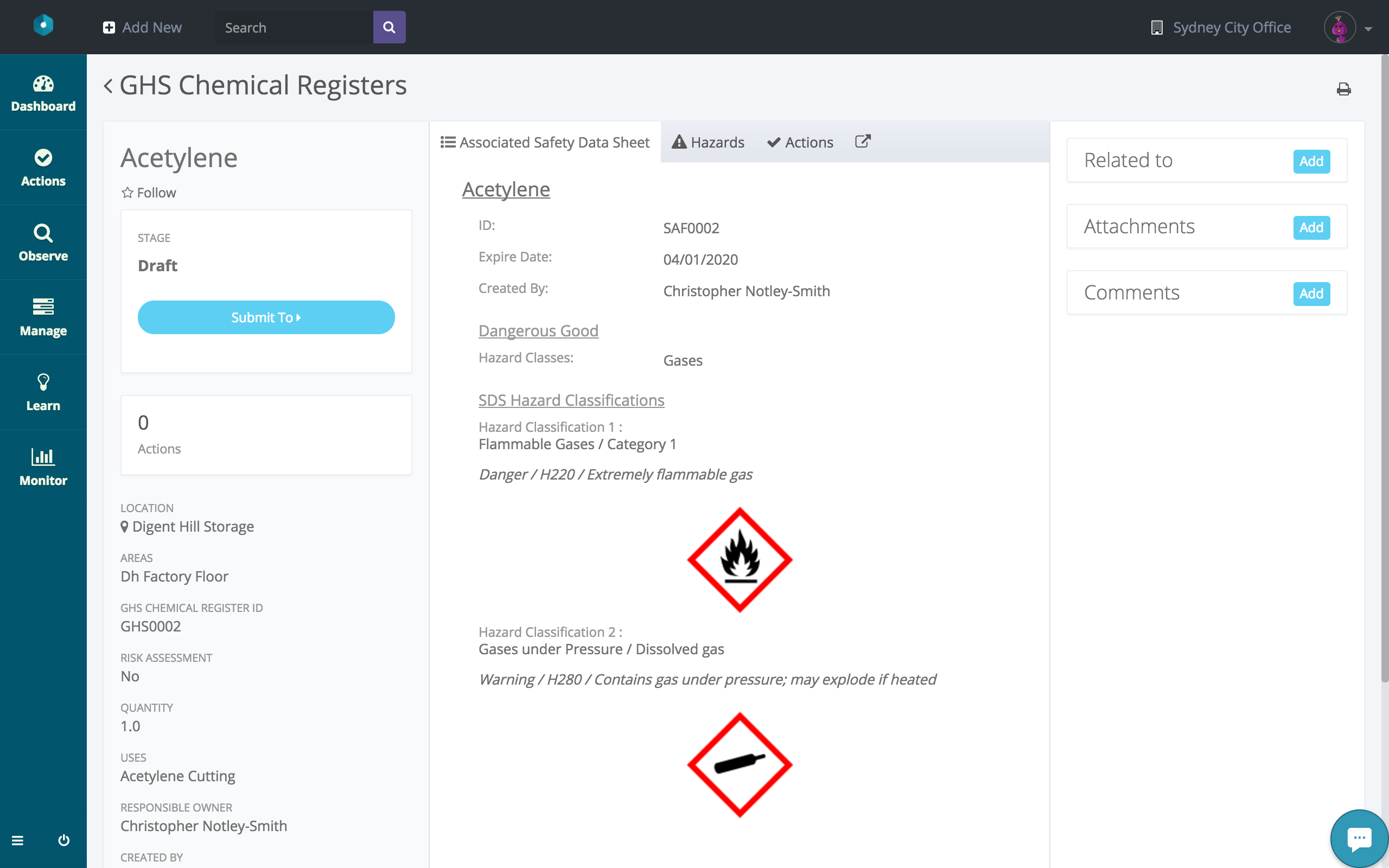
As you can see, the work you did setting up your SDS gets automatically pulled through to this record. From here, you can manage the record going forward.
Hazards Tab
Using the Hazards tab, you can assess hazards as well as assigning risks and controls to each one as needed. To do this, click on the “Hazards” tab and click on [+Add Hazard]. From here you can quickly add hazards as well as any risks and controls that apply.
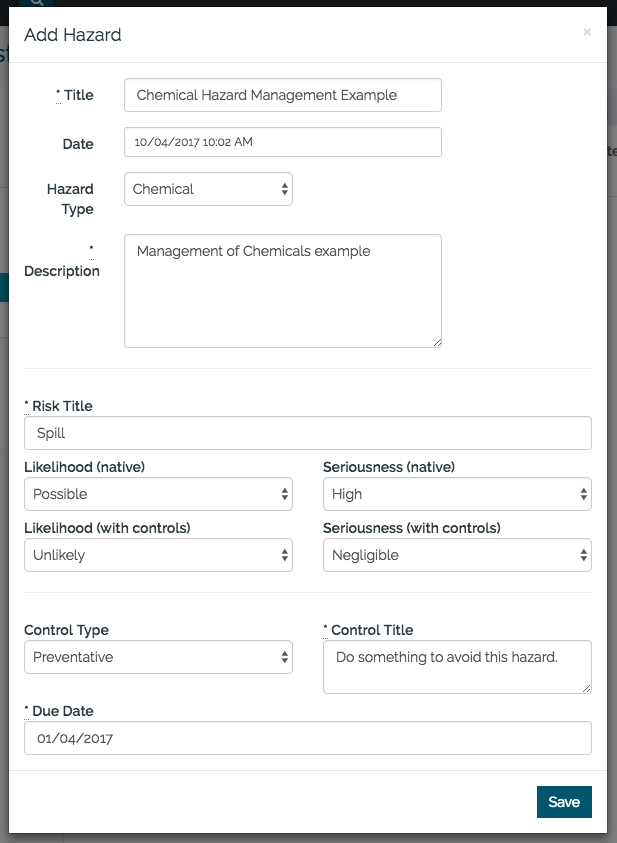
If the hazard requires any additional risks or controls, you can click on the hazard title record then add in risks and controls like you would with any other hazard, as outlined in this video. If there are any additional Hazards to add, simply click the [+Add Hazard] button again. You can see my poorly thought out the example below.
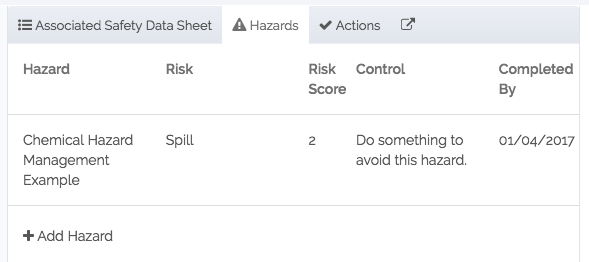
Any actions assigned out as part of this process are automatically assigned to the person listed as the “Responsible Owner” as part of the Hazard record created. This was set when creating the record. If these actions need to be reassigned, the Responsible Owner can do this or anybody with admin access.
Enabling the new SDS and GHS Chemical Register modules.
As with all modules, there is a two-step process to enabling it. Firstly, you need to turn it on for your account, and secondly, you need to enable it for yourself.
Turning on the modules for your account.
To enable both modules, go to Settings > Modules. Locate the modules (‘Safety Data Sheet Register’ AND ‘GHS Chemical Register’ and click through. Once there, click on the menu button and click ‘Show’.

You’ll need to do this for both modules.
Enabling your (and any staff’s) access rights.
Go to Settings > Roles. Then locate your own role and click through. As with enabling modules, you’ll need to do this for both GHS Chemical Register AND Safety Data Sheet Register.
Scroll down to the setting you’d like to adjust enable access for and assign yourself access to create/view/edit/delete. It’s really up to you how much or how little access your assign.

Once again, you’ll need to repeat this for GHS Chemical Register and SDS to unlock the full functionality. If you need any additional pointers for how Roles work, make sure to check out help.donesafe.com for more information and assistance.
And that’s it! Did we miss anything? Let us know! And of course, if you need any help with the system, don’t hesitate to contact support by using the help icon located on the bottom right of the screen.
Share:
